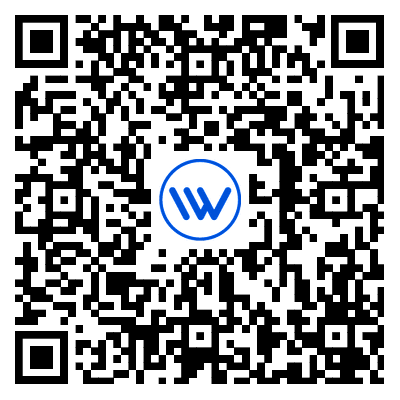Lerwee NMS VS Solarwinds NPM: Network Performance Monitoring (Part 2)
In today’s era of deepening digitalization, enterprise network architectures are becoming increasingly complex, and the demand for efficient and comprehensive network management tools is growing more urgent. As two influential products in the field of network management, Lerwee NMS and SolarWinds NPM each possess unique functions and features.
In the previous article Lerwee NMS vs. SolarWinds NPM Comparison (Part 1), the author conducted an in-depth analysis of Lerwee NMS and SolarWinds NPM from three core dimensions: network device monitoring, device connection relationships, and network topology maps. Next, this article will compare and analyze the two products in terms of Network Path Tracing (NetPath), visual display, virtualization monitoring, and wireless network monitoring.
1. Network Path Tracing (NetPath)
In terms of Network Path Tracing (NetPath), both Lerwee NMS and SolarWinds NPM are capable of path monitoring based on simulated detection.
Lerwee NMS supports the Traceroute method, which can monitor key indicators such as latency, path status, and gateways for the entire path from the source to the destination IP or URL. By analyzing the response time of each hop IP, it can accurately locate network bottlenecks, which is of great significance for troubleshooting network faults and optimizing network performance.

SolarWinds NPM , on the other hand, conducts path detection based on the TCP protocol. It can also display the response time and packet loss rate of each node, and intuitively present path faults in dynamic graphs, providing users with an intuitive and convenient method for fault troubleshooting.
2. Visual Display
Visualization capability is a crucial indicator for measuring the usability and decision-support level of modern network management platforms.
Lerwee NMS has obvious advantages in visual display. It supports a highly customizable dashboard function, allowing users to quickly complete various layouts (including network views, link views, monitoring views, and even “leadership views”) through drag-and-drop operations. This greatly improves operation and maintenance efficiency as well as information transmission efficiency. Meanwhile, Lerwee NMS has built-in at least 10 common screen projection layouts and offers the “Intelligent BI Large Screen” function. This function not only supports access to multiple data sources but also comes with rich built-in large-screen templates and supports low-code development. It enables users to quickly build visual large screens that meet their business needs, realizing in-depth data integration and dynamic display without relying on professional developers.

In contrast, although SolarWinds NPM also supports custom Web views and dashboards, and allows users to embed custom content by modifying HTML code, it lacks a genuine large-screen template system and low-code development support. This means that if users want to achieve an intelligent large-screen effect similar to Lerwee’s, they usually need to invest more development resources and time costs.
3. Virtualization Monitoring
With the widespread application of virtualization technology in enterprise data centers, comprehensive monitoring of the virtualization environment has become an indispensable capability of network management platforms.
Lerwee NMS performs particularly well in this aspect: it not only supports mainstream virtualization platforms such as VMware, Huawei Fusion, H3C CAS, Sangfor HCI, and PVE but also provides a complete virtualization topology display function, clearly presenting the hierarchical relationships between platforms, clusters, host machines, virtual machines, and data storage. In addition, Lerwee NMS allows users to customize the configuration attributes of host machines and virtual machines. It supports both manual entry and automatic discovery and synchronization of information from monitoring items, which greatly enhances the flexibility and accuracy of resource management.

SolarWinds NPM also has the ability to monitor mainstream virtualization platforms such as VMware vSphere and Hyper-V, and can automatically discover newly added virtual machines. However, its drawback is that it does not provide a visual display function for virtualization topology, making it difficult for users to intuitively understand the dependency relationships between virtual resources. In a complex virtualization environment, this deficiency may affect the efficiency of fault location and resource planning capabilities.
4. Wireless Network Monitoring
In terms of wireless network monitoring, Lerwee NMS and SolarWinds NPM each have their own characteristics.
Lerwee NMS provides comprehensive statistics on the status of AC/AP, including AC performance indicators, AP online terminal rankings, regional network speed rankings, etc. It also supports viewing detailed information of AC (such as manufacturer, model, operating duration, and CPU/memory usage) and key indicators of AP (such as online/offline status, user drop rate, user distribution in 2.4G/5G frequency bands, and packet loss rate of uplink ports). This data directly serves the daily operation and maintenance optimization of wireless networks, helping IT teams quickly identify performance bottlenecks and abnormal devices.

SolarWinds NPM, on the other hand, offers more in-depth wireless client monitoring. It supports automatic discovery of APs, SSIDs, channels, and active clients, and can group devices by dimensions such as controllers, manufacturers, and regions, providing client details including signal strength and Rx/Tx status. In addition, its support for Cisco WLC can generate wireless signal heatmaps, providing a visual basis for wireless coverage optimization.
Summary
Lerwee NMS has demonstrated capabilities equivalent to or even superior to those of SolarWinds NPM, an international mainstream product, in multiple key functional modules. From the comprehensive monitoring of network path tracing, to the flexible customization of visual display, to the in-depth insight of virtualization monitoring and the detailed statistics of wireless network monitoring, Lerwee NMS can provide enterprises with a more powerful and comprehensive network management solution. Of course, as a mature international brand, SolarWinds NPM still holds undeniable value in terms of global ecological integration and functional integrity.
- Monitoring new forces vs. traditional powerhouses: Why can LeWei intelligent monitoring replace Tivoli?
- A Brief Discussion on the Differences Between Zabbix and Prometheus
- How IT Monitoring Systems Reduce Suspicious Activity Rates for Enterprises
- Zabbix VS Lerwee Monitoring: Architecture & Performance
- Lerwee NMS vs. Solarwinds NPM: Network Performance Monitoring (Part 1)
- Release of LerweeAOM V8.0

